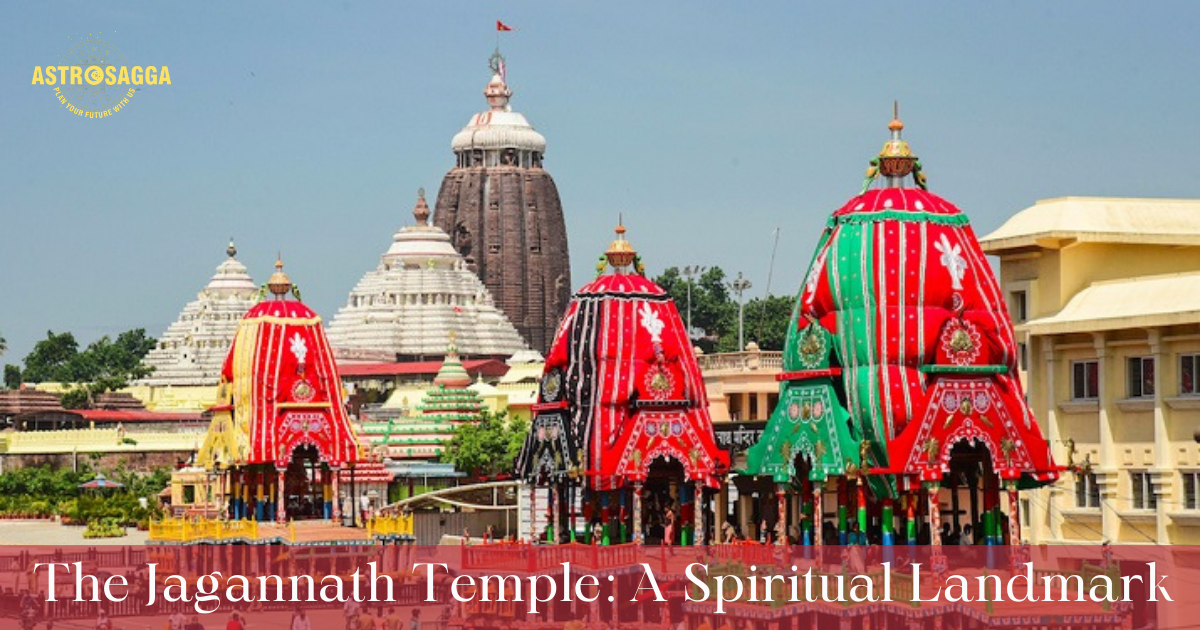The Jagannath Temple: A Spiritual Landmark
The Jagannath Temple, located in Puri, Odisha, India, stands as one of the most revered Hindu temples in the world. Its towering spire and intricate architecture attract millions of pilgrims and tourists annually. Let's delve into the rich history, religious significance, architectural marvels, and cultural impact of this ancient temple.
The Jagannath Puri Rath Yatra, also known as the Chariot Festival, is a significant Hindu festival celebrated annually in the city of Puri, Odisha, India. The festival commemorates the journey of Lord Jagannath, along with his siblings Balabhadra and Subhadra, from their temple to the Gundicha Temple. This event attracts millions of devotees from all over the world who come to witness the grand procession of the deities on elaborately decorated chariots, pulled by devotees through the streets of Puri. The Rath Yatra is characterized by its vibrant atmosphere, devotional fervor, and cultural displays, making it one of the most famous and revered festivals in India and among the Hindu diaspora worldwide.
Historical Background
The origins of the Jagannath Temple trace back to ancient times, with references found in various Hindu scriptures and epics. Built by King Anantavarman Chodaganga Deva in the 12th century, the temple showcases the Kalinga style of architecture, characterized by its grand spire and intricate carvings.
Religious Significance
In Hinduism, the Jagannath Temple holds immense significance as it enshrines deities like Lord Jagannath, Lord Balabhadra, and Devi Subhadra. The annual Rath Yatra, or Chariot Festival, draws millions of devotees who come to witness the grand procession of the deities.
Temple Structure and Design
The main shrine of the Jagannath Temple is a towering structure adorned with intricate carvings and sculptures. Surrounding the main temple are various smaller shrines, mandapas (pillared halls), and gardens, adding to the architectural splendor of the complex.
Rituals and Practices
Daily rituals at the temple commence with the Mangala Aarti in the early morning and conclude with the Shayana Vesha, or bedtime attire of the deities, in the evening. Various ceremonies and rituals are performed throughout the day, following age-old traditions.
Visitors and Pilgrims
Apart from its religious significance, the Jagannath Temple is a popular tourist destination, attracting visitors from all over the globe. Pilgrims embark on a spiritual journey to seek blessings and immerse themselves in the divine atmosphere of the temple.
Controversies and Legends
The temple is steeped in myths and legends, with intriguing stories surrounding its origin and construction. Over the centuries, it has also been the subject of historical controversies, adding to its mystique and allure.
Preservation Efforts
In recent years, efforts have been made to preserve and restore the temple's architectural heritage. Conservation projects aim to maintain the structural integrity of the complex while safeguarding its cultural significance for future generations.
Economic Impact
The Jagannath Temple serves as a major economic hub, contributing significantly to the tourism industry in Odisha. The influx of pilgrims and tourists stimulates local businesses and provides employment opportunities for the region.
Influence on Culture and Society
The temple's influence extends beyond religion, permeating various aspects of culture and society. It has inspired art, literature, music, and dance forms, shaping the cultural identity of the region for centuries.
Conclusion
The Jagannath Temple stands as a testament to India's rich cultural and religious heritage. Its timeless allure and spiritual ambiance continue to captivate devotees and visitors alike, making it a cherished landmark of divine significance.
FAQs (Frequently Asked Questions)
What is the significance of the Rath Yatra at the Jagannath Temple?
The Rath Yatra is an annual festival where the deities are taken out in a grand procession on elaborately decorated chariots, allowing devotees to have darshan (sight) of the gods.
How old is the Jagannath Temple?
The temple dates back to the 12th century when it was commissioned by King Anantavarman Chodaganga Deva.
What are the best times to visit the Jagannath Temple?
The temple experiences peak footfall during festivals like Rath Yatra and during the winter months when the weather is pleasant for sightseeing.
AstroSagga, the leading online destination for astrology predictions, offers the wisdom of Vedic astrologers, tarot readers, and numerologists. Enhance your understanding through diverse astrology courses and consultations.












